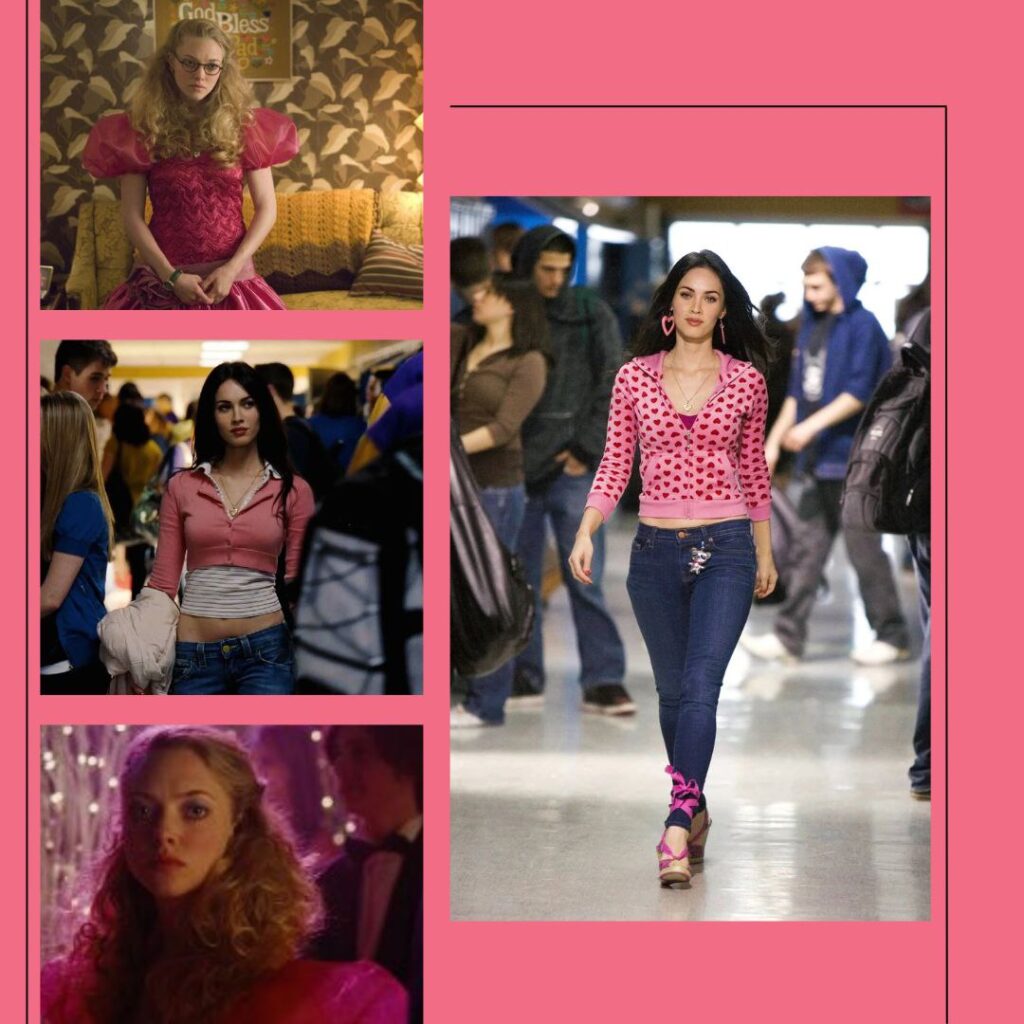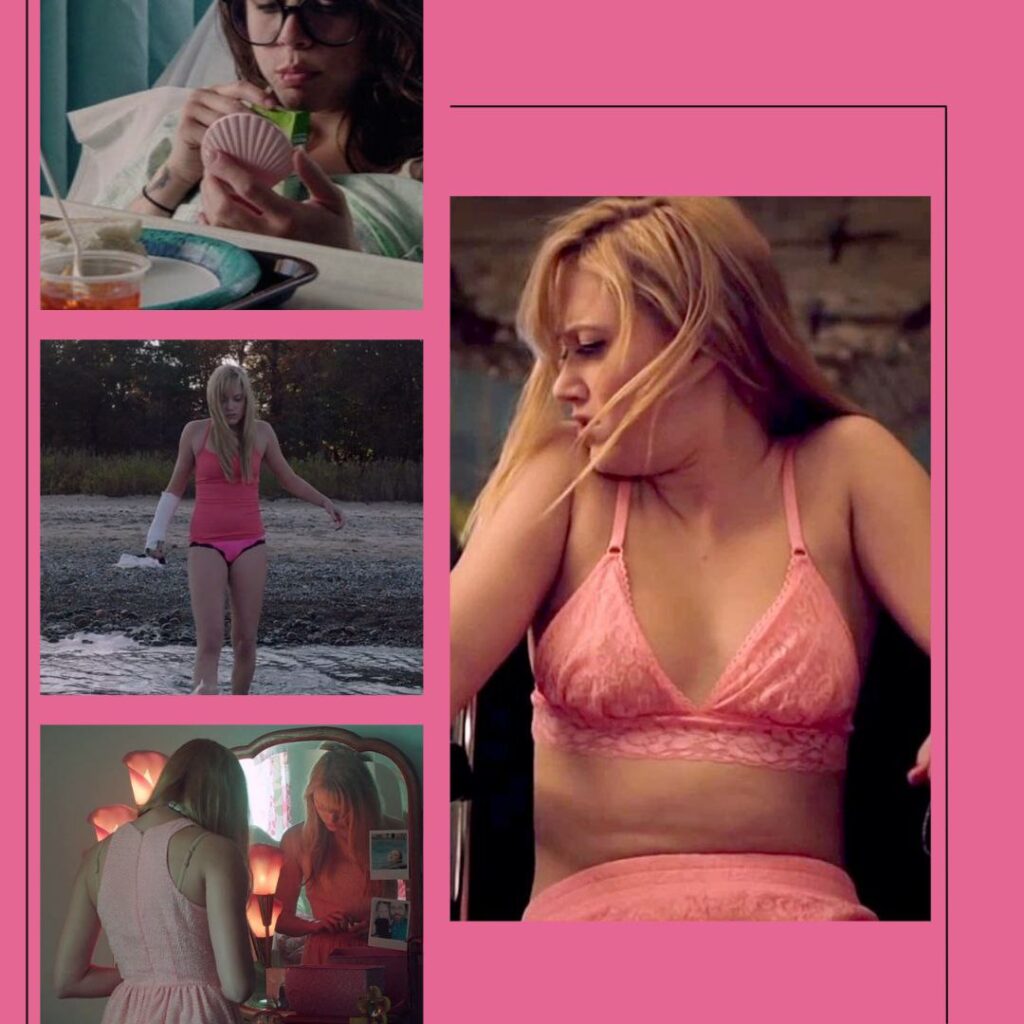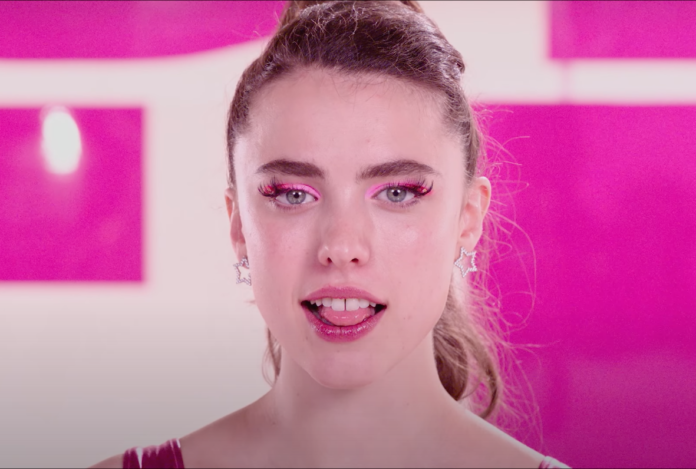Pink is not your typical horror color. It’s soft. It’s sparkly. It’s something you’d expect to find in a unicorn sticker book or Barbie’s dreamhouse, not a slasher flick. And yet — it shows up in horror more often than you’d think.
That’s because pink isn’t just cute. It’s a layered color — one that can signal innocence or irony, girlhood or revenge, sweetness or psychological instability. In the right hands, pink doesn’t soften the horror — it sharpen it with contrast.
Let’s take a closer look at what pink means in horror, and how filmmakers have used it to unsettle, surprise, and terrify us.
Femininity & Girlhood
Jennifer’s Body (2009)

Let’s start with the classic association: pink = feminine, girly, delicate. It’s the go-to shade for gender reveal parties (“It’s a girl!”) and toy packaging. In horror, this stereotype gets flipped on its head.
Take Jennifer’s Body. Megan Fox struts through high school in a bubblegum-pink sweater, all shiny lip gloss and cheerleader vibes. But after dark? She’s devouring teenage boys and soaking the floor in blood. Her outward softness becomes a weapon — the ultimate “girly girl” turned predator.
The genius here is in the contrast: pink as armor. Pink as performance. Pink as something that doesn’t make you weak — it lures them in.
Empowerment, Irony & Rage
Promising Young Woman (2020)
Pink can still be soft — but in the hands of the right woman, it’s a trap. In Promising Young Woman, Cassie (played by Carey Mulligan) wears pastel dresses, ribbons, and manicured nails, but behind the sweetness lies a brutal mission: to avenge her best friend and hold predatory men accountable.

Her candy-colored look throws people off. It disarms them. That’s the point. In horror and horror-adjacent thrillers, pink can be a coded warning — this woman may look fragile, but she’s not here to play nice.
Jennifer and Cassie are spiritual cousins: smart, hurt, and using femininity as a disguise for fury.
Innocence, Naivety & Vulnerability
Pink is also the color of first crushes, baby blankets, and soft childhood memories. It evokes a kind of pre-adulthood glow — the last moment of safety before the world gets sharp.
That’s why it works so well in horror — it creates a visceral contrast. When horror descends on pink-soaked scenes, the innocence makes the fear hit harder. Think of a bloodbath in a child’s bedroom with pastel wallpaper. A creepy porcelain doll in a rose-pink dress. A character in a pink hoodie walking straight into danger.
In horror, pink often signals someone who’s not ready — someone who’s still trusting, still unarmored, still believing the world is fair. That makes them a perfect target… or a character about to undergo a horrifying transformation.
“Rose-Tinted Glasses” and Shattered Fantasies
And then there’s the metaphor: pink as illusion. The color of rose-tinted glasses, daydreams, and comforting lies. In many horror films, pink represents the world before it breaks — before the monsters crawl out, before the betrayal, before the body count begins.
It’s a color that can signify the calm before the storm, or worse — denial in the face of it. The kind of false safety that makes the eventual horror feel like a sucker punch. And when that fantasy world comes crashing down? The shards often cut deep.
We see it in stories where a character’s dreams are replaced by nightmares, where innocence is corrupted, or where sweet aesthetics mask a rot underneath. In horror, pink doesn’t protect you — it deceives you.

Final Thoughts: Pink Has Claws
Pink is a trickster in horror. It can mean purity or poison, softness or strength, naivety or calculated vengeance. It’s a color that filmmakers use because it creates contrast — between what we expect and what we get.
So the next time you see pink lighting in a horror film, or a character dressed like a pastel princess, don’t get comfortable. That soft glow might be the last warmth before everything burns down.
Because in horror? Even pink bleeds.
